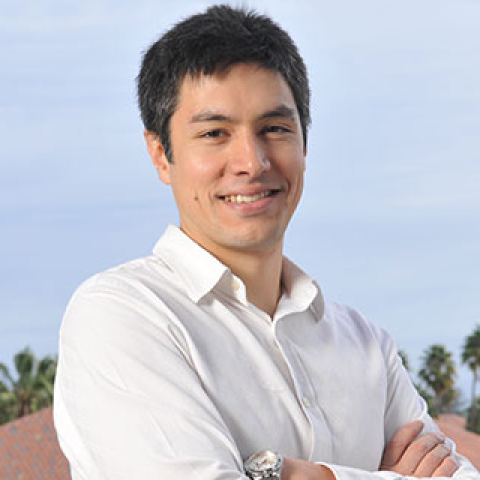Interdisciplinary Initiatives Program Round 6 - 2012
KC Huang, Bioengineering
Wolf Frommer, Biology
David Ehrhardt, Plant Biology
How organisms achieve their specific forms and alter their growth pattern in response to environmental signals have been subjects of investigation since at least Darwin’s time. The processes of cell and tissue morphogenesis are intrinsically physical in nature, and hence probing the underlying mechanisms requires an interdisciplinary approach that considers forces, dynamics, and physical cellular properties on equal footing with identifying and dissecting the functions of biochemical pathways responsible for growth. Plant cells represent an ideal case study, as they are under high internal pressure generated by turgor. This pressure is constrained by the external cell wall, a rigid extracellular matrix composed of an organized matrix of cellulose microfibrils embedded in and crosslinked by other polysaccharides and proteins. In addition, the cell wall cements adjacent cells together into a material continuum. Thus, when integrated over many cells, anisotropic cell wall growth and cell expansion is an essential driver of the morphogenesis and form of the plant itself, supporting essential functions such as light capture for photosynthesis, gas exchange, nutrient uptake, water balance, reproduction and mechanical adaptation to the physical environment. Anisotropy of cell wall growth requires both cellulose synthesis and integrity of the highly organized cortical microtubule cytoskeleton. As cell walls grow anisotropically, changes in mechanical stress are hypothesized to influence cytoskeletal organization, which further influences cell wall growth anisotropy, creating a feedback loop that is exploited to generate tissue form. A central challenge to addressing the feasibility and consequences of this growth model is the lack of a quantitative, physics-based framework through which to interpret and suggest novel experiments. Intriguingly, bacteria and plant cells undergo common physical behaviors during growth despite the large differences in molecular composition and size. In particular, the Huang lab and others have recently demonstrated that the actin cytoskeleton in rod-shaped bacteria positions the insertion of new cell wall material, which in turn causes the rotation of the cytoskeleton. Critically, we have developed a computational model of cell wall growth that we have validated on a number of independent growth processes. Thus, our proposal focuses on capitalizing on the physical laws revealed in bacteria to enhance our understanding of the complexity of plant morphogenesis, using a feedback cycle between imaging and biophysical model development. Based on this knowledge we will be able to plan future studies to investigate the mechanical principles organizing collections of plant cells in tissues, and map this understanding back to the currently unknown principles of how densely packed bacterial communities organize and expand.


